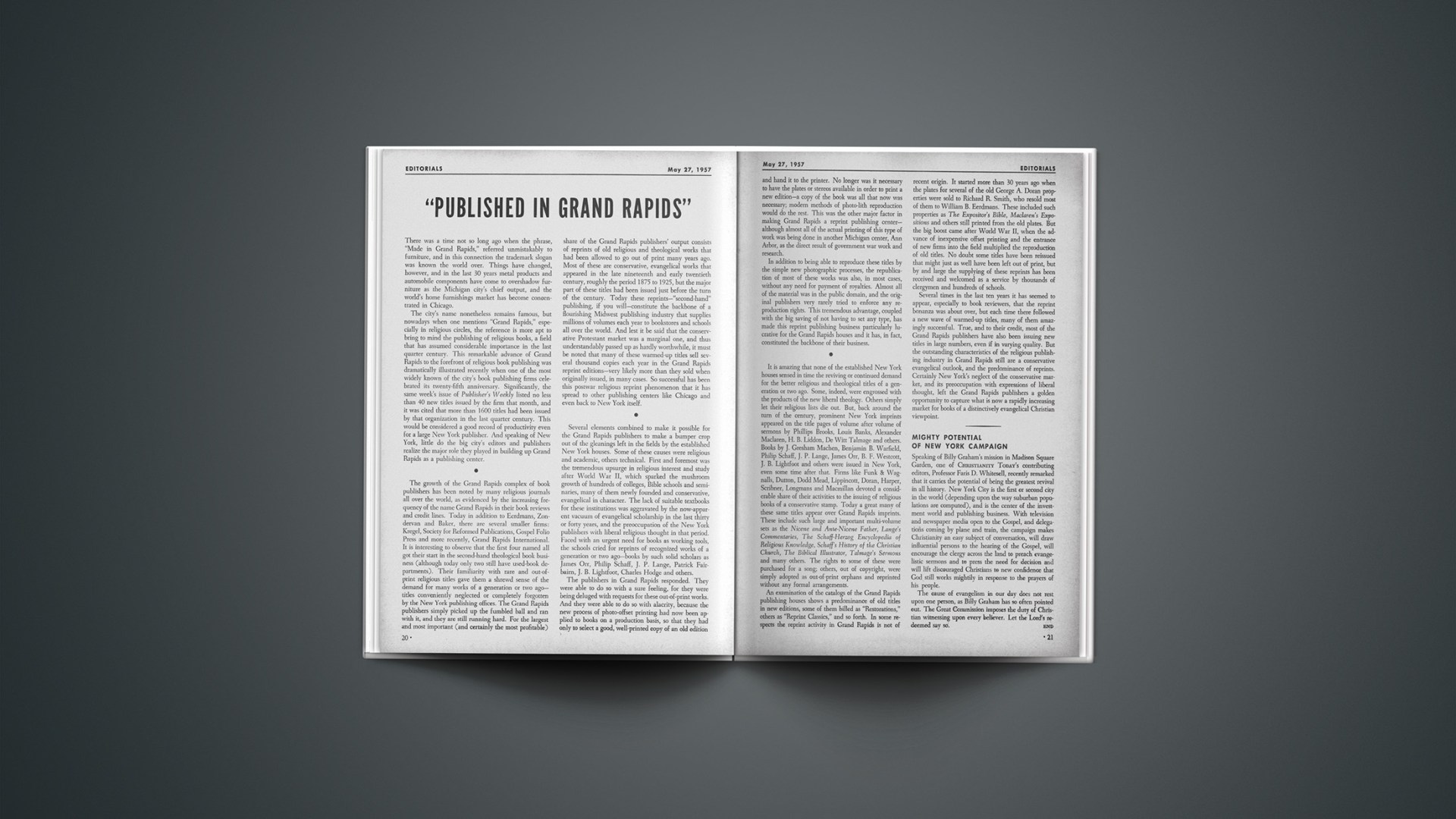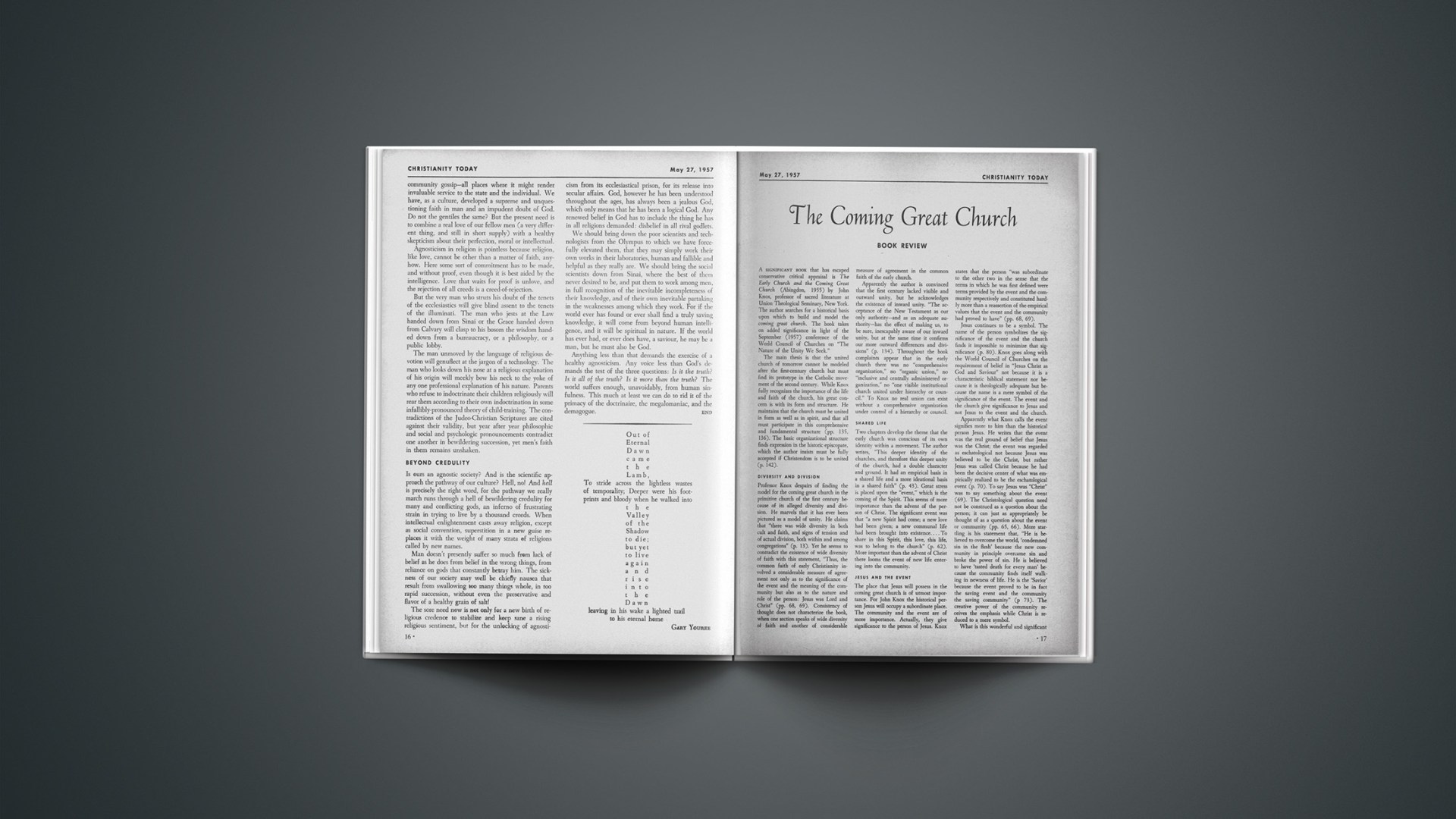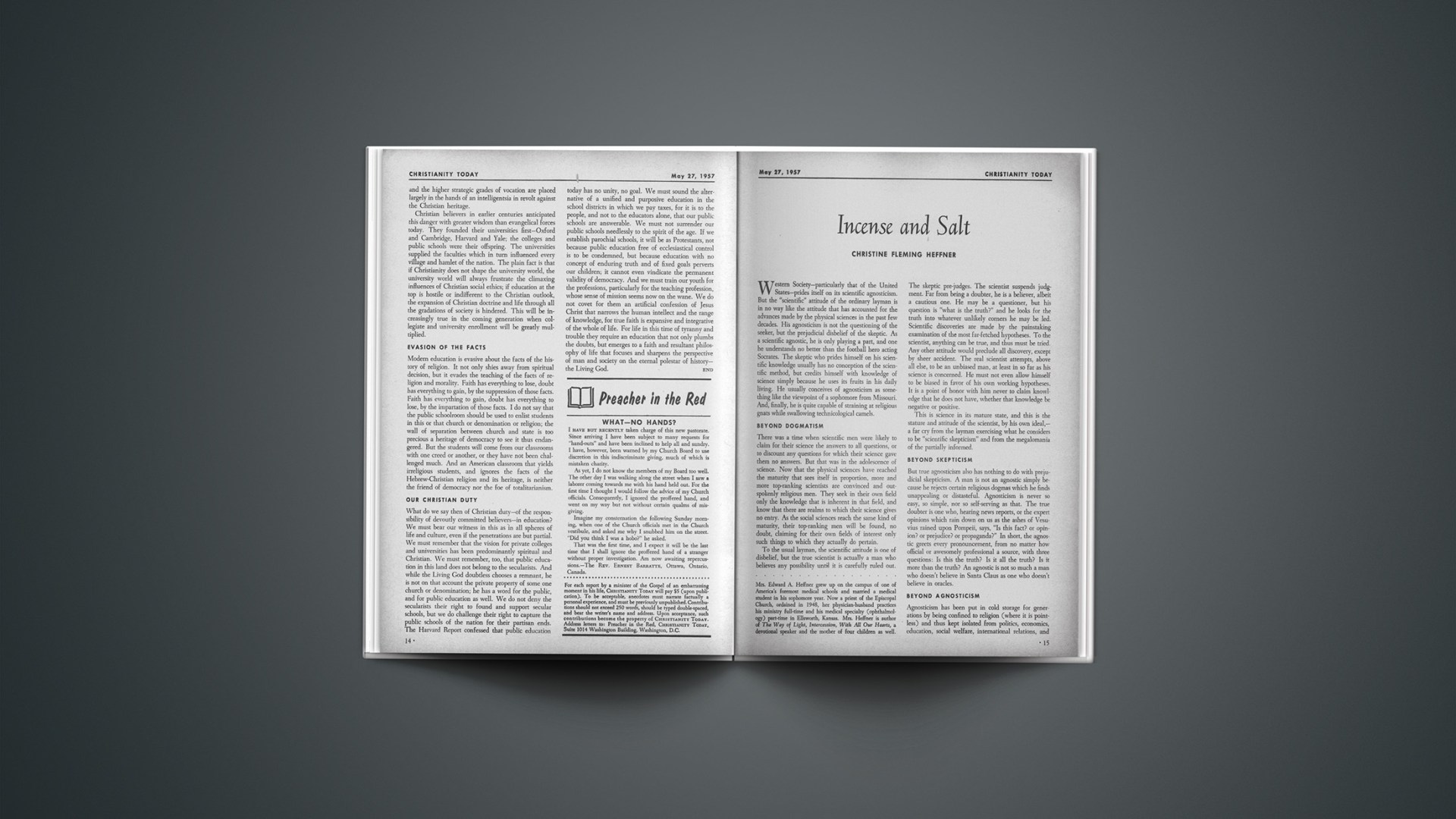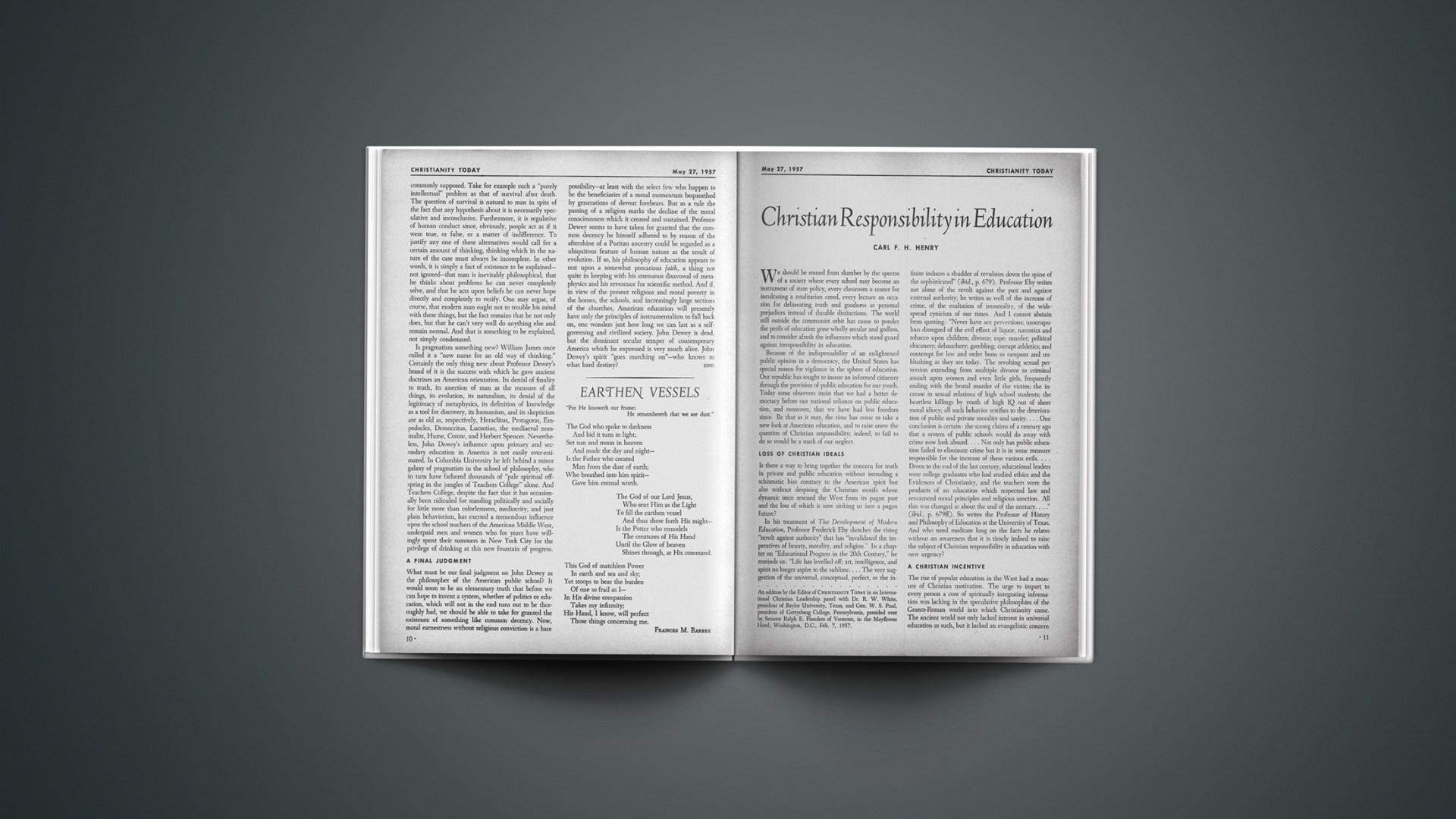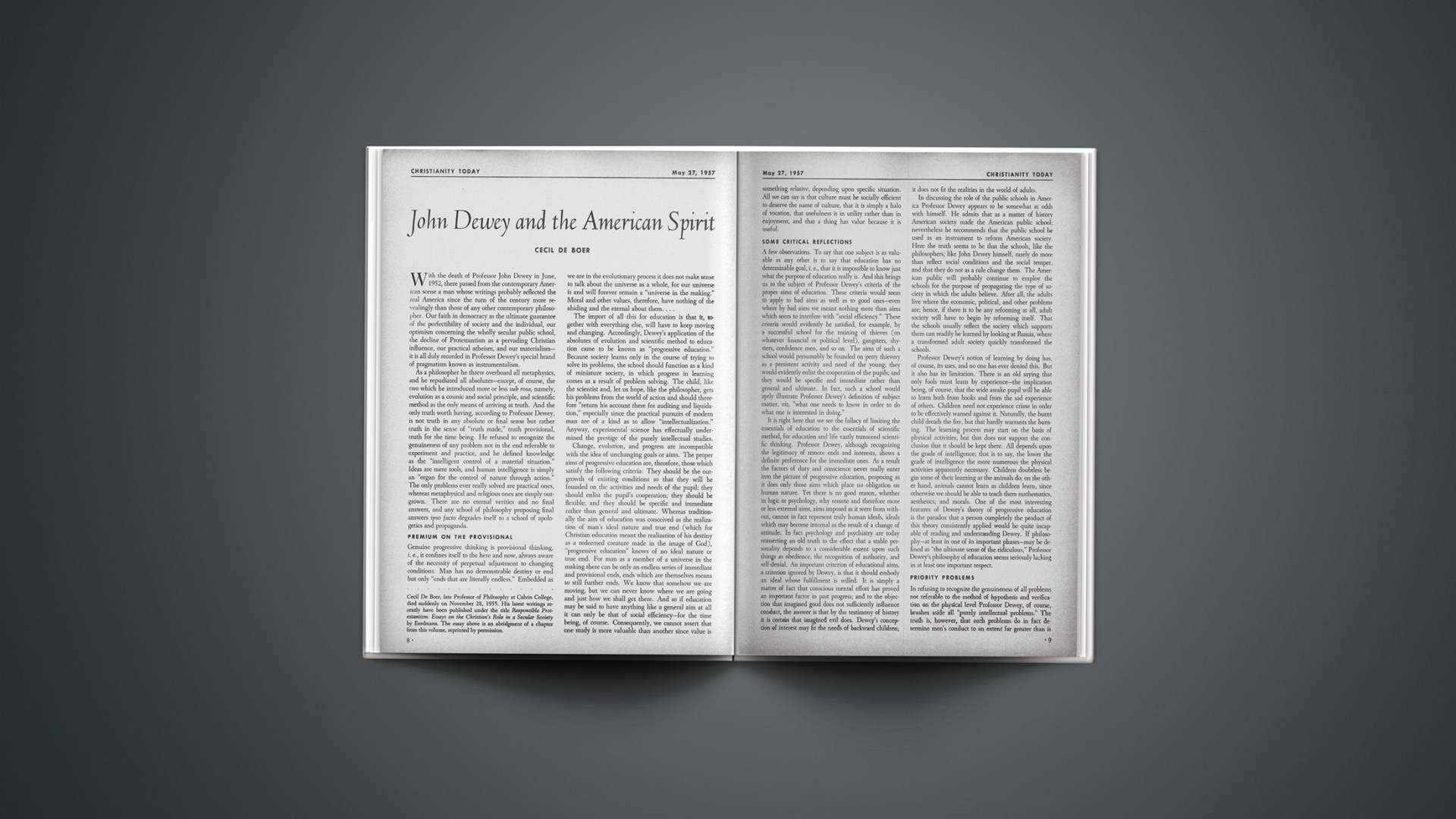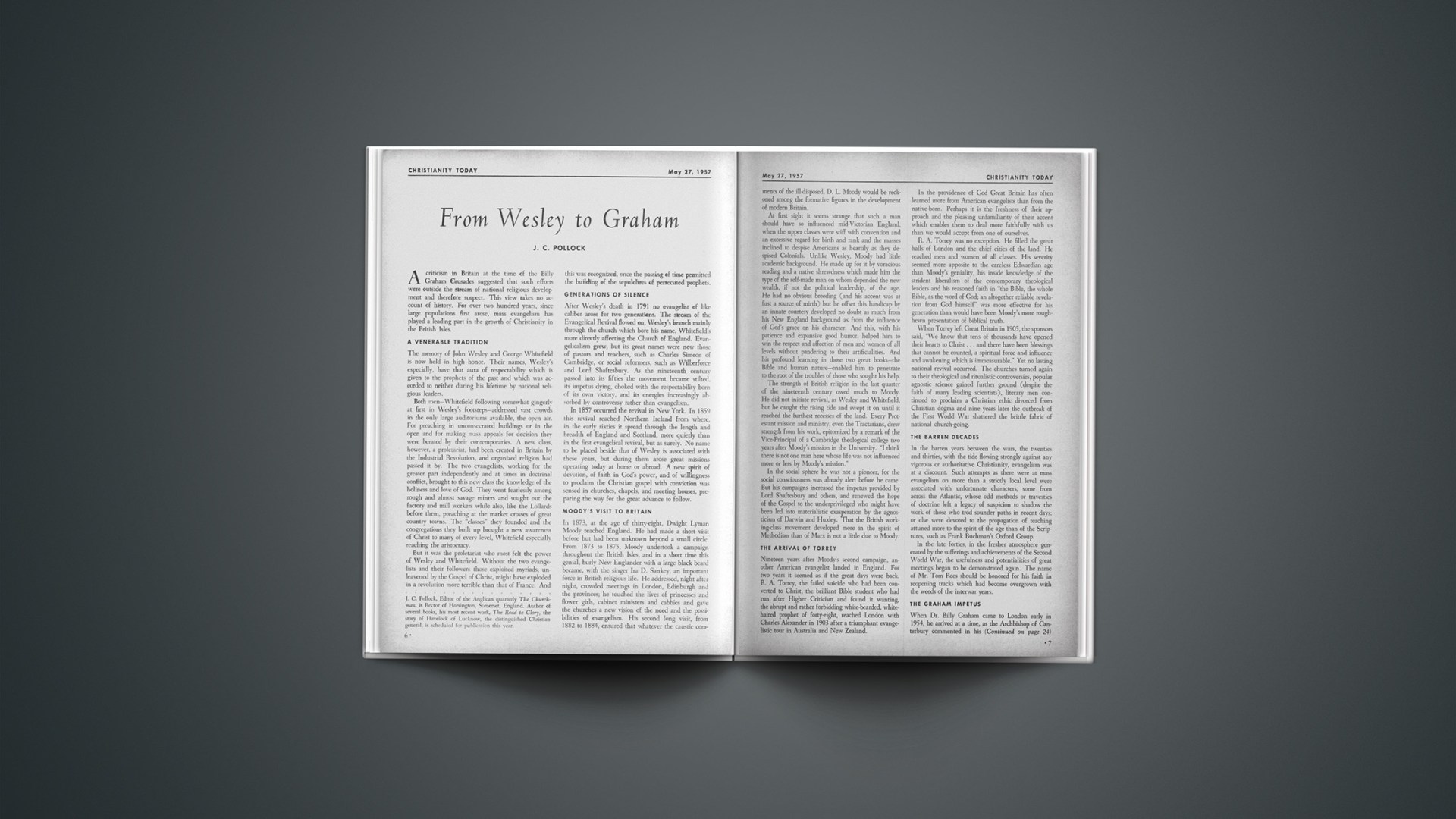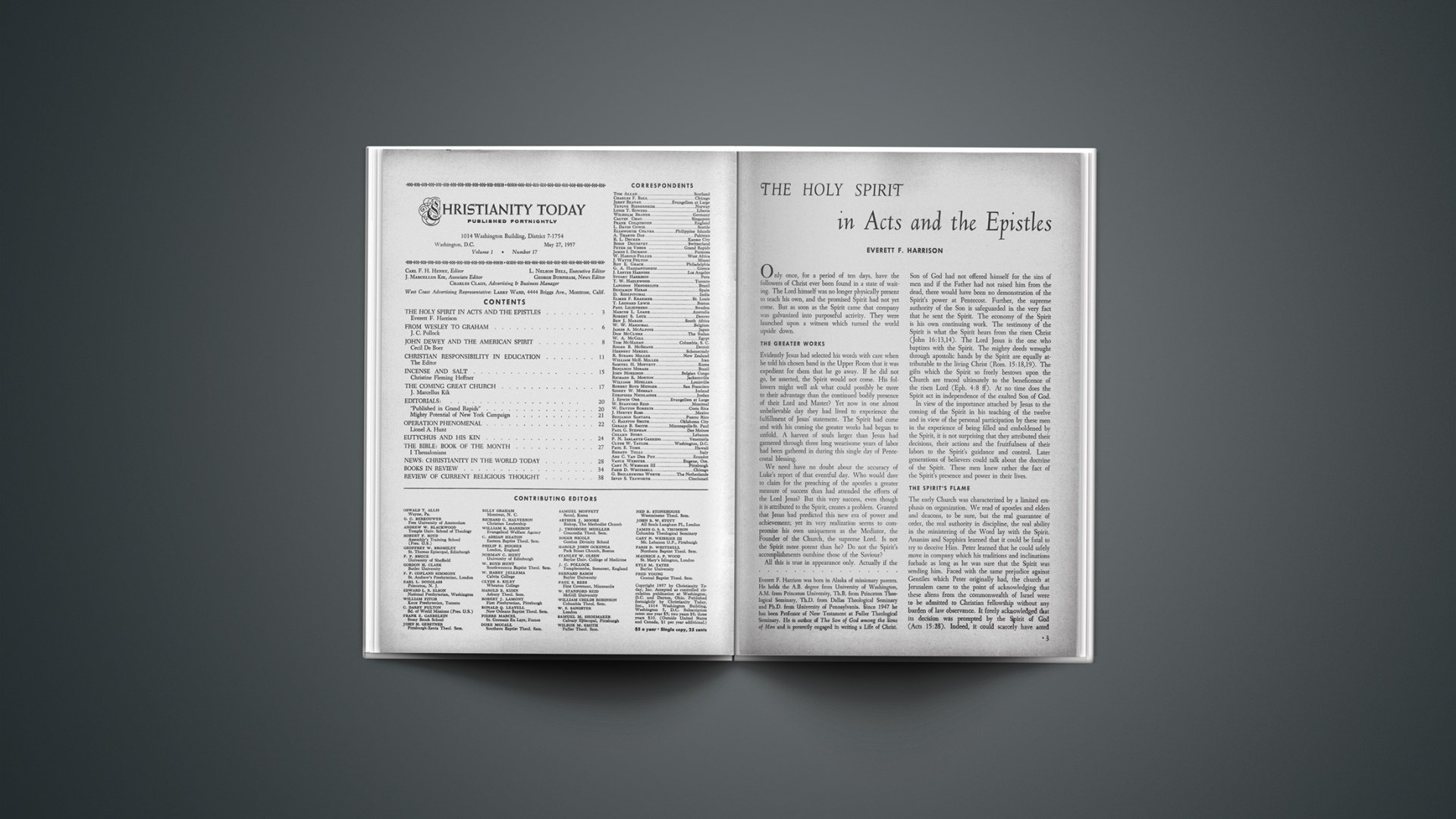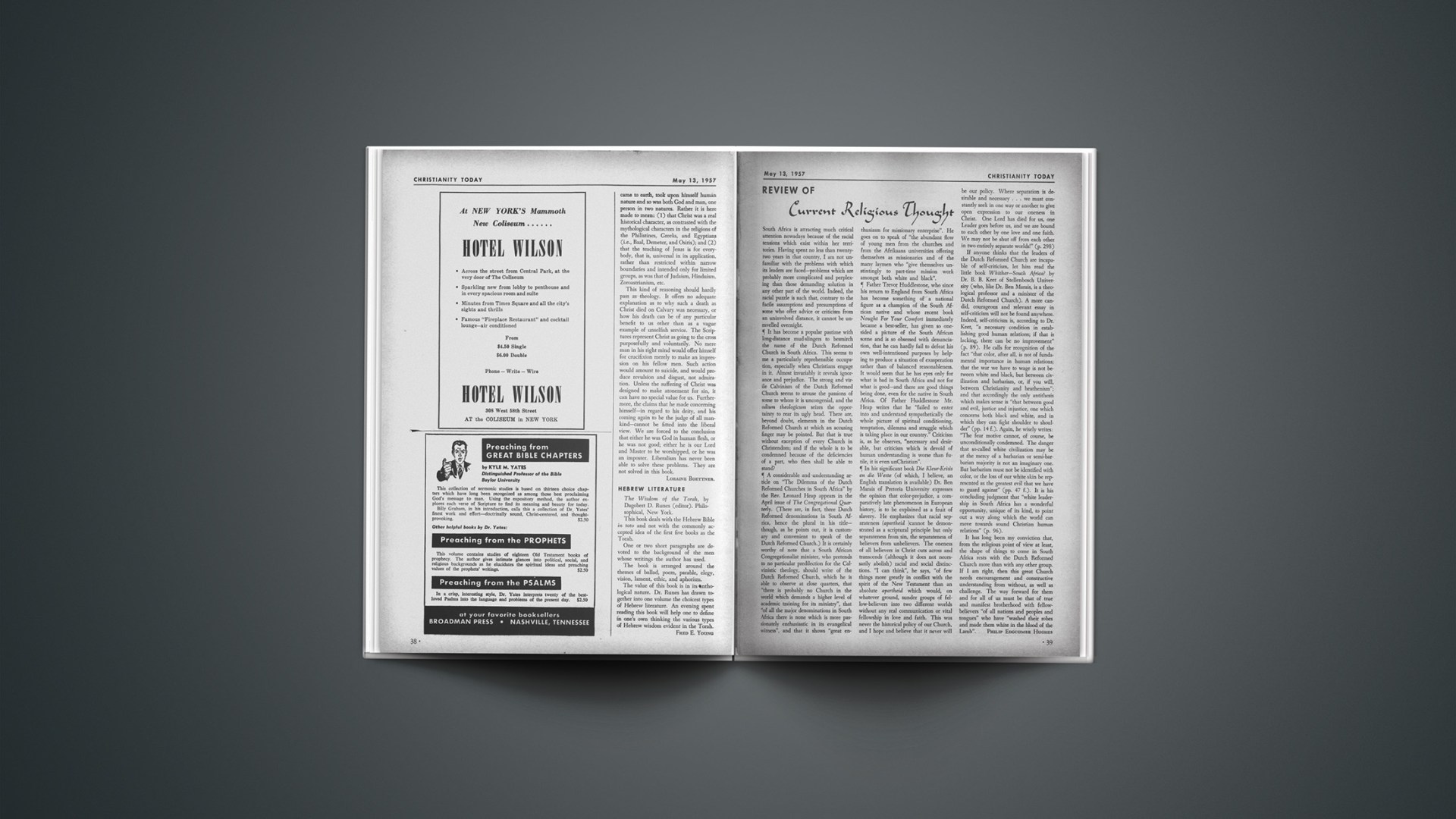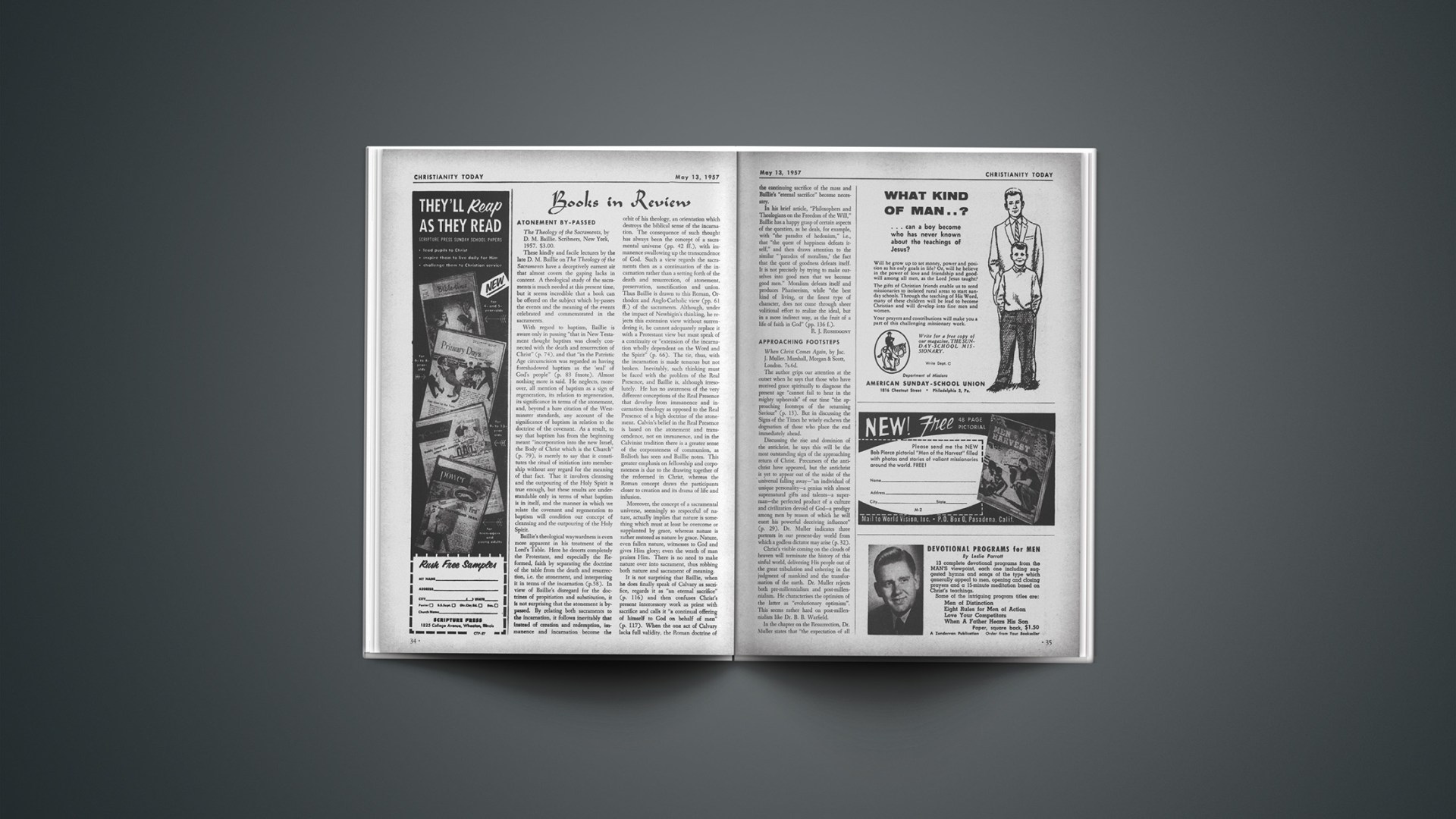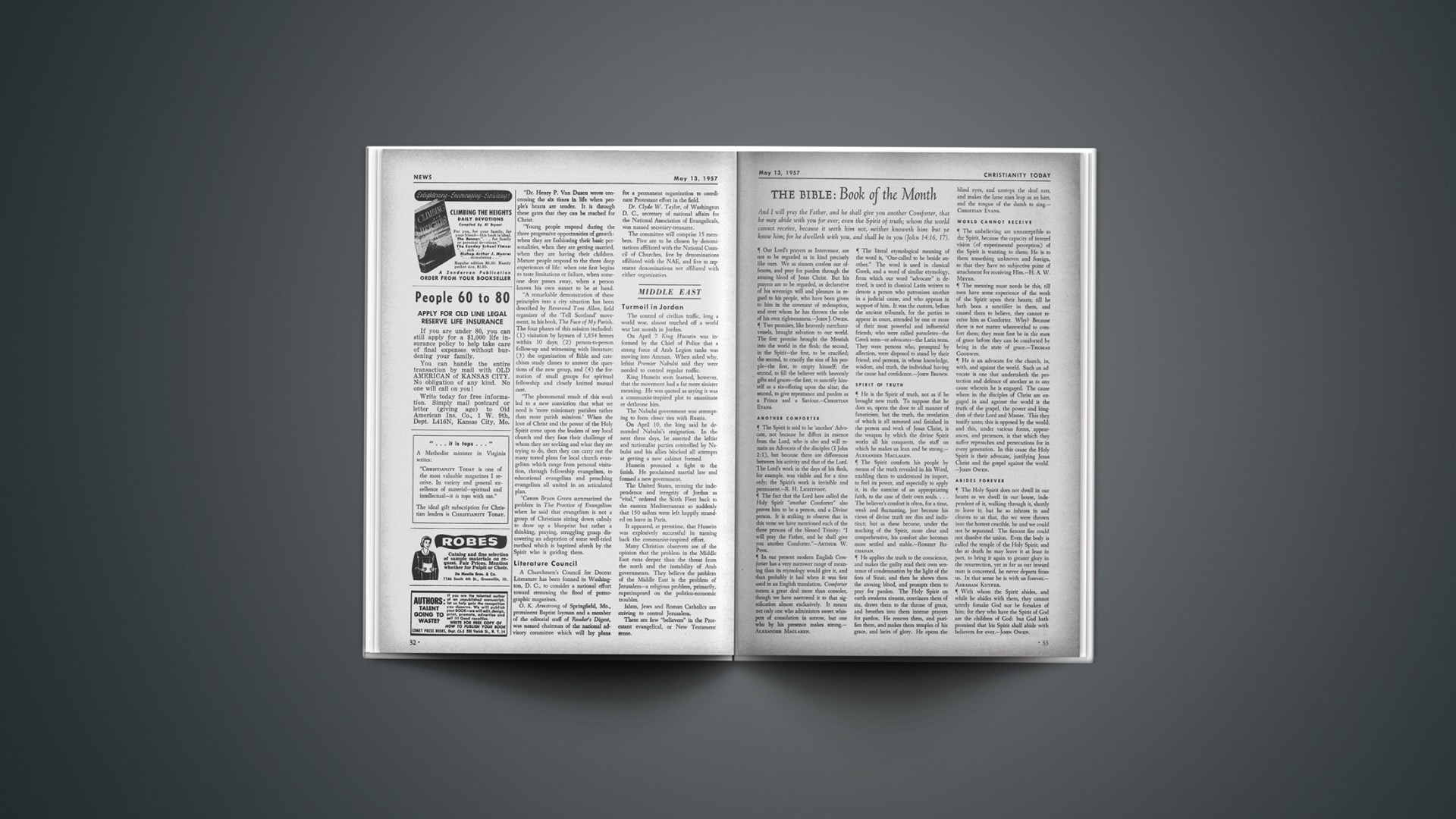“Published In Grand Rapids”
There was a time not so long ago when the phrase, “Made in Grand Rapids,” referred unmistakably to furniture, and in this connection the trademark slogan was known the world over. Things have changed, however, and in the last 30 years metal products and automobile components have come to overshadow furniture as the Michigan city’s chief output, and the world’s home furnishings market has become concentrated in Chicago.
The city’s name nonetheless remains famous, but nowadays when one mentions “Grand Rapids,” especially in religious circles, the reference is more apt to bring to mind the publishing of religious books, a field that has assumed considerable importance in the last quarter century. This remarkable advance of Grand Rapids to the forefront of religious book publishing was dramatically illustrated recently when one of the most widely known of the city’s book publishing firms celebrated its twenty-fifth anniversary. Significantly, the same week’s issue of Publisher’s Weekly listed no less than 40 new titles issued by the firm that month, and it was cited that more than 1600 titles had been issued by that organization in the last quarter century. This would be considered a good record of productivity even for a large New York publisher. And speaking of New York, little do the big city’s editors and publishers realize the major role they played in building up Grand Rapids as a publishing center.
The growth of the Grand Rapids complex of book publishers has been noted by many religious journals all over the world, as evidenced by the increasing frequency of the name Grand Rapids in their book reviews and credit lines. Today in addition to Eerdmans, Zondervan and Baker, there are several smaller firms: Kregel, Society for Reformed Publications, Gospel Folio Press and more recently, Grand Rapids International. It is interesting to observe that the first four named all got their start in the second-hand theological book business (although today only two still have used-book departments). Their familiarity with rare and out-of-print religious titles gave them a shrewd sense of the demand for many works of a generation or two ago—titles conveniently neglected or completely forgotten by the New York publishing offices. The Grand Rapids publishers simply picked up the fumbled ball and ran with it, and they are still running hard. For the largest and most important (and certainly the most profitable) share of the Grand Rapids publishers’ output consists of reprints of old religious and theological works that had been allowed to go out of print many years ago. Most of these are conservative, evangelical works that appeared in the late nineteenth and early twentieth century, roughly the period 1875 to 1925, but the major part of these titles had been issued just before the turn of the century. Today these reprints—“second-hand” publishing, if you will—constitute the backbone of a flourishing Midwest publishing industry that supplies millions of volumes each year to bookstores and schools all over the world. And lest it be said that the conservative Protestant market was a marginal one, and thus understandably passed up as hardly worthwhile, it must be noted that many of these warmed-up titles sell several thousand copies each year in the Grand Rapids reprint editions—very likely more than they sold when originally issued, in many cases. So successful has been this postwar religious reprint phenomenon that it has spread to other publishing centers like Chicago and even back to New York itself.
Several elements combined to make it possible for the Grand Rapids publishers to make a bumper crop out of the gleanings left in the fields by the established New York houses. Some of these causes were religious and academic, others technical. First and foremost was the tremendous upsurge in religious interest and study after World War II, which sparked the mushroom growth of hundreds of colleges, Bible schools and seminaries, many of them newly founded and conservative, evangelical in character. The lack of suitable textbooks for these institutions was aggravated by the now-apparent vacuum of evangelical scholarship in the last thirty or forty years, and the preoccupation of the New York publishers with liberal religious thought in that period. Faced with an urgent need for books as working tools, the schools cried for reprints of recognized works of a generation or two ago—books by such solid scholars as James Orr, Philip Schaff, J. P. Lange, Patrick Fairbairn, J. B. Lightfoot, Charles Hodge and others.
The publishers in Grand Rapids responded. They were able to do so with a sure feeling, for they were being deluged with requests for these out-of-print works. And they were able to do so with alacrity, because the new process of photo-offset printing had now been applied to books on a production basis, so that they had only to select a good, well-printed copy of an old edition and hand it to the printer. No longer was it necessary to have the plates or stereos available in order to print a new edition—a copy of the book was all that now was necessary; modern methods of photo-lith reproduction would do the rest. This was the other major factor in making Grand Rapids a reprint publishing center—although almost all of the actual printing of this type of work was being done in another Michigan center, Ann Arbor, as the direct result of government war work and research.
In addition to being able to reproduce these titles by the simple new photographic processes, the republication of most of these works was also, in most cases, without any need for payment of royalties. Almost all of the material was in the public domain, and the original publishers very rarely tried to enforce any reproduction rights. This tremendous advantage, coupled with the big saving of not having to set any type, has made this reprint publishing business particularly lucrative for the Grand Rapids houses and it has, in fact, constituted the backbone of their business.
It is amazing that none of the established New York houses sensed in time the reviving or continued demand for the better religious and theological titles of a generation or two ago. Some, indeed, were engrossed with the products of the new liberal theology. Others simply let their religious lists die out. But, back around the turn of the century, prominent New York imprints appeared on the title pages of volume after volume of sermons by Phillips Brooks, Louis Banks, Alexander Maclaren, H. B. Liddon, De Witt Talmage and others. Books by J. Gresham Machen, Benjamin B. Warfield, Philip Schaff, J. P. Lange, James Orr, B. F. Westcott, J. B. Lightfoot and others were issued in New York, even some time after that. Firms like Funk & Wagnalls, Dutton, Dodd Mead, Lippincott, Doran, Harper, Scribner, Longmans and Macmillan devoted a considerable share of their activities to the issuing of religious books of a conservative stamp. Today a great many of these same titles appear over Grand Rapids imprints. These include such large and important multi-volume sets as the Nicene and Ante-Nicene Father, Lange’s Commentaries, The Schaff-Herzog Encyclopedia of Religious Knowledge, Schaff’s History of the Christian Church, The Biblical Illustrator, Talmage’s Sermons and many others. The rights to some of these were purchased for a song; others, out of copyright, were simply adopted as out-of-print orphans and reprinted without any formal arrangements.
An examination of the catalogs of the Grand Rapids publishing houses shows a predominance of old titles in new editions, some of them billed as “Restorations,” others as “Reprint Classics,” and so forth. In some respects the reprint activity in Grand Rapids is not of recent origin. It started more than 30 years ago when the plates for several of the old George A. Doran properties were sold to Richard R. Smith, who resold most of them to William B. Eerdmans. These included such properties as The Expositor’s Bible, Maclaren’s Expositions and others still printed from the old plates. But the big boost came after World War II, when the advance of inexpensive offset printing and the entrance of new firms into the field multiplied the reproduction of old titles. No doubt some titles have been reissued that might just as well have been left out of print, but by and large the supplying of these reprints has been received and welcomed as a service by thousands of clergymen and hundreds of schools.
Several times in the last ten years it has seemed to appear, especially to book reviewers, that the reprint bonanza was about over, but each time there followed a new wave of warmed-up titles, many of them amazingly successful. True, and to their credit, most of the Grand Rapids publishers have also been issuing new titles in large numbers, even if in varying quality. But the outstanding characteristics of the religious publishing industry in Grand Rapids still are a conservative evangelical outlook, and the predominance of reprints. Certainly New York’s neglect of the conservative market, and its preoccupation with expressions of liberal thought, left the Grand Rapids publishers a golden opportunity to capture what is now a rapidly increasing market for books of a distinctively evangelical Christian viewpoint.
Mighty Potential Of New York Campaign
Speaking of Billy Graham’s mission in Madison Square Garden, one of CHRISTIANITY TODAY’S contributing editors, Professor Faris D. Whitesell, recently remarked that it carries the potential of being the greatest revival in all history. New York City is the first or second city in the world (depending upon the way suburban populations are computed), and is the center of the investment world and publishing business. With television and newspaper media open to the Gospel, and delegations coming by plane and train, the campaign makes Christianity an easy subject of conversation, will draw influential persons to the hearing of the Gospel, will encourage the clergy across the land to preach evangelistic sermons and to press the need for decision and will lift discouraged Christians to new confidence that God still works mightily in response to the prayers of his people.
The cause of evangelism in our day does not rest upon one person, as Billy Graham has so often pointed out. The Great Commission imposes the duty of Christian witnessing upon every believer. Let the Lord’s redeemed say so.

